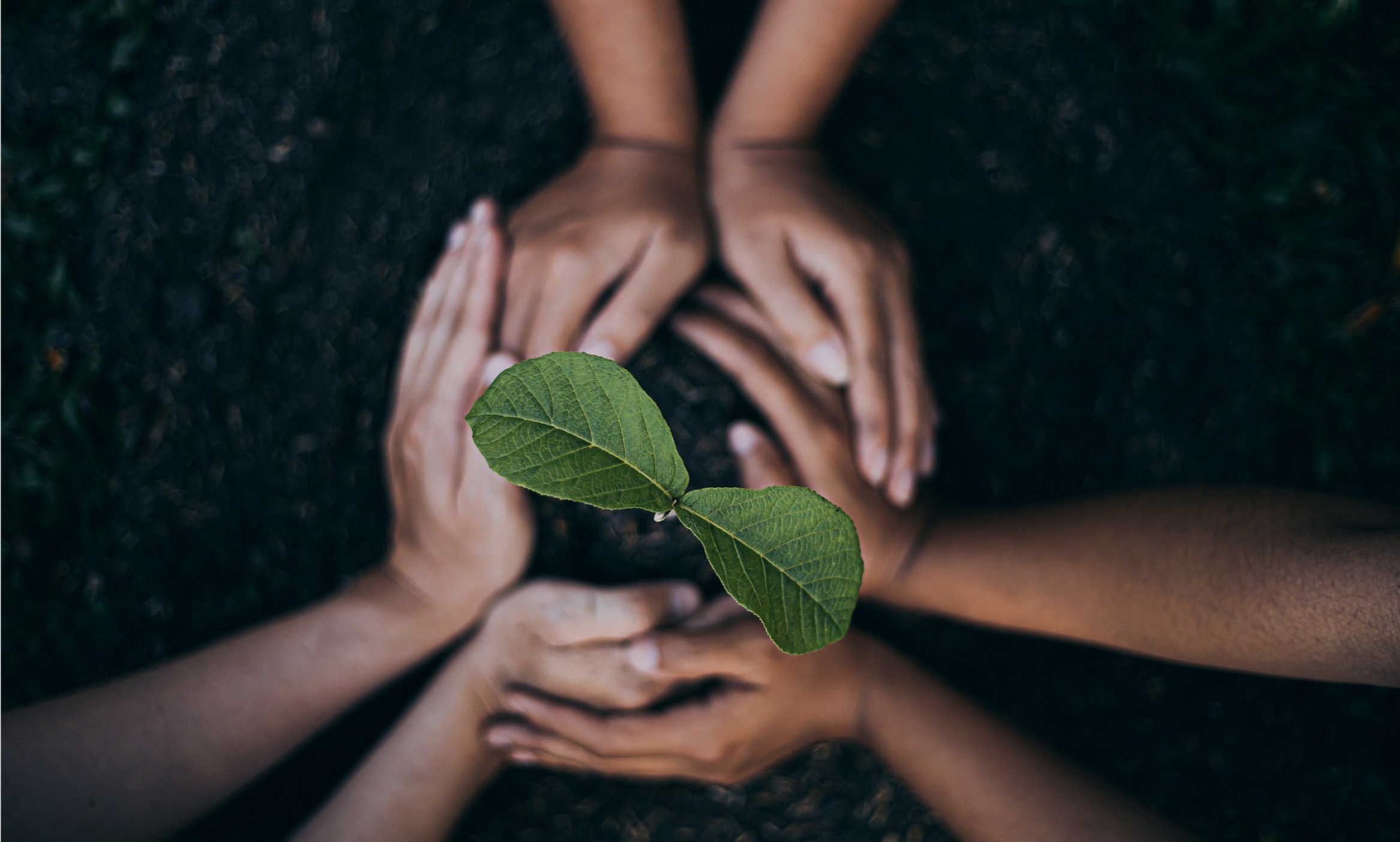

A school's culture encompasses the shared values, behaviors, and daily practices that shape its community. When sustainability is embedded into this culture, it becomes a natural part of everyday actions—guiding how resources are used, how the campus operates, and how the school engages with its community.
By cultivating a culture that prioritizes environmental responsibility and community wellbeing, schools can serve as role models, demonstrating to students the importance of sustainable practices. This approach not only enhances the school's impact but also equips students with the mindset and habits to make positive contributions beyond the classroom.

This START metric is about promoting a nutritious diet in a sustainable manner through accessible activities and programs. Whether it’s providing nutritional information for school lunches, running ‘Meatless Mondays’, or a farm-to-school program, each activity/ program will have an educational component that ensures an enduring impact.
START Metric #10: Outreach Campaigns
This START metric is about connecting with and improving the wider community. Every year, schools will engage in sustainability-related outreach campaigns that pursue measurable results and have active and educational components, such as No Idling Campaigns, midnight runs, electronics-recycling campaigns or community gardens. Unlike events, campaigns may last a few weeks or even a few months, but conclude once they have fulfilled their aim.
START Metric #11: Communications
This START metric is about providing ongoing, formal communication about the school’s sustainability programs and progress to the school community. This could be in the form of social media posts, websites, annual reports, newsletters, or in-person presentations.
START Metric #12: Community Service
This START metric is about providing students with information about or access to community service opportunities. Students will contribute to their wider communities through activities that benefit others (e.g. reading to the elderly), animals (e.g. caring for dogs at a shelter) or the earth (e.g. tree-planting).
START Metric #13: Local Partnerships
This START metric is about connecting and collaborating with a non-school entity from the surrounding community (e.g. school districts, government agencies, non-profit organizations) to advance economic, environmental and/or social sustainability. For example, creating donation hubs or helping with invasives-removal.
This START metric is about developing transparency and stakeholder engagement at all levels of governance, including financial oversight, personnel management, and strategic planning. Stakeholders should have their views welcomed and considered, and be kept informed and included in the decision-making process when appropriate.
This START metric is about procuring sustainable products that have environmental, social and economic benefits, and protect both public health and the environment over their whole life cycle, from the extraction of raw materials until their final disposal. This runs the gamut from food, furniture and stationery to cleaning products, clothing, transport and electricity.
START Metric #16: Strategic Planning
This metric encourages schools to integrate sustainability into their strategic planning processes. By aligning long-term goals and action plans with environmental stewardship, resource efficiency, and community well-being, schools can create a roadmap that supports both educational excellence and a thriving, sustainable future.
START Metric #17: Sustainability Committee
This START metric is about having a dedicated committee responsible for steering the school’s environmental efforts and advancing sustainability projects on campus.
START Metric #18: Sustainability Coordinator
This START metric is about having a school employee responsible for managing the school’s broad sustainability efforts.
START Metric #19: Sustainability Planning
This START metric is about outlining your school’s definition of sustainability, as well as your specific sustainability goals, including specific sustainability targets, such as eliminating plastic cutlery from the cafeteria, or reducing greenhouse gas emissions by a specified amount within a given timeframe.
START Metric #20: Climate Resilience
This metric focuses on strengthening a school's capacity to anticipate, prepare for, and respond to climate-related challenges, such as increased risks of extreme heat, fires, droughts, floods, and resource insecurity. By integrating climate resilience into planning, infrastructure, and daily practices, schools can ensure a safe and supportive learning environment that adapts to changing conditions.
START Metric #22: Low-Income Accessibility
This START metric is about preventing money from being a barrier to student involvement or success in your community - student enrollment of at least 2-5% low-income students. To achieve this, schools can offer financial assistance or flexible tuition.
START Metric #23: Employee Feedback
This START metric is about allowing the people who work at your school to provide feedback in order to address issues and cultivate a safe, healthy and happy workplace for all.
START Metric #24: Employee Training
This metric focuses on equipping all school staff—teachers, administrative personnel, and support teams—with the knowledge and skills to support the school's sustainability and regeneration goals. By providing training on sustainable practices relevant to their roles, staff can contribute to creating a thriving school environment that nurtures both people and the planet.
This START metric is about exchanging sustainability and regeneration-related ideas, insights, information and best practices between schools. The Green Schools Alliance is an example of such a network, but your school should participate in other sustainability networks too, including at least 2 school-to-school networks.
START Metric #26: Employee Wellness
This START metric is about promoting the physical and psychological wellness of all school employees, from administrators and faculty members to office staff, facilities managers and custodians. Examples of actions include mindfulness or nutrition training, community gyms, medical screenings and services, financial planning and counseling.
START Metric #27: Physical Activity
This START metric is about providing organized physical activity opportunities to students, beyond what individual states mandate. Schools should prioritize time spent outdoors (weather permitting) and provide a variety of before-, in- or after- school activities, such as sports teams, jogathons, yoga sessions or dance breaks.
START Metric #28: Student Wellness Committee
This START metric is about having an adult group that advances the health and well-being of students according to the committee’s priorities, and eventually implementing policies and programs for student wellness.

What is ‘Sustainability’?
“Meeting the needs of the present generations without compromising the ability of future generations to meet their own needs.”
Did you know that the mass of human-made things just exceeded the mass of all living things on earth?
Or that planet is now hotter than at any time in the past 125,000 years - and that there is near-universal consensus (97–99.9%) in the peer-reviewed scientific literature that the climate is changing as a result of human activity?
We need to learn, adapt and think creatively to solve these new challenges, and create a new future in which we work with our shared planet, instead of against it.
Sustainability is the ongoing effort to reduce human impact on the planet and to restore the health of the natural systems we all depend on, so that both people and nature can thrive. It involves using resources wisely, supporting strong communities, and rethinking how we live, learn, and work to ensure wellbeing now and into the future.
A truly sustainable approach also supports regeneration—the process of renewing and strengthening the Earth's life-support systems, including clean air, fresh water, healthy soil, and biodiversity, the rich variety of life that makes our planet habitable (for all earth’s creatures - including us!). These systems are under increasing pressure, but through informed, purposeful action, we can help restore them and safeguard the foundation of life for ourselves and for future generations.

What is ‘Regeneration’?
Regeneration goes beyond sustainability by focusing not just on maintaining the status quo but on actively restoring, renewing, and enhancing natural systems, communities, and economies. While sustainability aims to "do no harm" by preserving resources for future generations, regeneration seeks to "do better" by improving the health and vitality of the systems we depend on.
Schools hold the key to a healthy, sustainable and regenerative future.
Education equips learners with the knowledge, skills, and mindset to understand and respond to today’s environmental challenges and their impacts, and to help restore and regenerate the natural systems we depend on.
Schools can prepare students to think critically, act creatively, and contribute to a future where communities and ecosystems can thrive—now and for generations to come.
But how do we get there?
START: Sustainability Tracking, Analytics & Roadmap Tool was created by schools, for schools, to help them make step-by-step progress towards sustainability and regenerative practice.
START provides a Roadmap for School Sustainability:
It breaks down school sustainability into clear actions (‘metrics’), such as Minimizing Waste, Reducing Greenhouse Gas Emissions, and supporting Sustainable Transportation options.
However, research shows it’s not enough for a school to simply reduce its environmental impact in its Physical Place (buildings & grounds). Students and staff also need to learn about sustainability (Educational Programs), and practice it in day-to-day activities (Organizational Culture), because hands-on involvement fosters lasting habits and a deeper understanding of our shared responsibility for environmental stewardship.
How sustainable is our school now?
Schools use START to measure how sustainable they are now. A school’s START team investigates how their school currently operates to find their ‘sustainability baseline’ for each metric. For example, is our school a beginner, intermediate or advanced in sustainable water use?
START also enables schools to quantify and track their waste, water, energy and greenhouse gas emissions.
Where should we go next?
What do we need to do to ‘level up’ in each metric? Once schools have their baselines, START helps them to set goals and plan for progress.

























